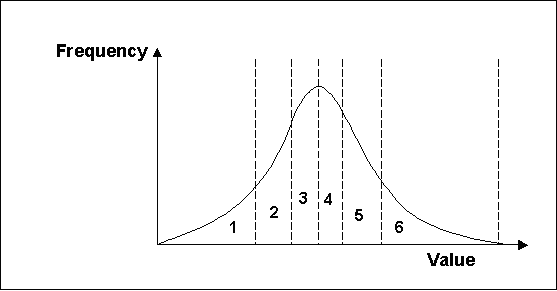GMS:Stochastic Modeling: Difference between revisions
From XMS Wiki
Jump to navigationJump to search
No edit summary |
No edit summary |
||
| Line 1: | Line 1: | ||
{{Infobox Calibration}} | {{Infobox Calibration}} | ||
There are two methods in GMS for stochastic modeling using MODFLOW 2000. The first, [[#Using Parameter Zonation With Stochastic Modeling|parameter zonation]], uses either a [[#Using Parameter Zonation With Stochastic Modeling|Random Sampling]], [[#Using Parameter Zonation With Stochastic Modeling|Latin Hypercube Sampling]], or [[GMS:Gaussian Field Generator|Gaussian Fields]] to generate the different realizations. The second approach uses [[#Using Indicator Simulations With Stochastic Modeling|indicator simulations]] generated by [[GMS:T-PROGS|T-PROGS]]. | There are two methods in GMS for stochastic modeling using MODFLOW 2000. The first, [[GMS:Stochastic Modeling#Using Parameter Zonation With Stochastic Modeling|parameter zonation]], uses either a [[GMS:Stochastic Modeling#Using Parameter Zonation With Stochastic Modeling|Random Sampling]], [[GMS:Stochastic Modeling#Using Parameter Zonation With Stochastic Modeling|Latin Hypercube Sampling]], or [[GMS:Gaussian Field Generator|Gaussian Fields]] to generate the different realizations. The second approach uses [[GMS:Stochastic Modeling#Using Indicator Simulations With Stochastic Modeling|indicator simulations]] generated by [[GMS:T-PROGS|T-PROGS]]. | ||
After the stochastic simulation results are generated, you can view these results using the [[GMS:The GMS Screen|Project Explorer]]. You can also refine the results by using the [[GMS:Risk Analysis Wizard|Risk Analysis Wizard]] or [[GMS:Stochastic Modeling#Statistical Analysis of Stochastic MODFLOW/MT3D solutions|Statistical Analysis of Stochastic solutions]]. | After the stochastic simulation results are generated, you can view these results using the [[GMS:The GMS Screen|Project Explorer]]. You can also refine the results by using the [[GMS:Risk Analysis Wizard|Risk Analysis Wizard]] or [[GMS:Stochastic Modeling#Statistical Analysis of Stochastic MODFLOW/MT3D solutions|Statistical Analysis of Stochastic solutions]]. | ||
| Line 12: | Line 12: | ||
Stochastic inverse modeling is a [[GMS:Global Options/Basic Package|MODFLOW run option]] that takes each run in a stochastic simulation and performs [[GMS:Automated Parameter Estimation|parameter estimation]] on the run to find the optimal values based on observation data. This option is very time consuming compared with a regular stochastic simulation and a parameter estimation run because you are doing parameter estimation for each stochastic run times. | Stochastic inverse modeling is a [[GMS:Global Options/Basic Package|MODFLOW run option]] that takes each run in a stochastic simulation and performs [[GMS:Automated Parameter Estimation|parameter estimation]] on the run to find the optimal values based on observation data. This option is very time consuming compared with a regular stochastic simulation and a parameter estimation run because you are doing parameter estimation for each stochastic run times. | ||
Stochastic inverse modeling can be performed only when using [[#Using Indicator Simulations With Stochastic Modeling|material sets or HUF arrays]] as chosen in the ''Stochastic Options'' dialog. [[GMS:Automated Parameter Estimation|PEST]] is the parameter estimation code supported by GMS. | Stochastic inverse modeling can be performed only when using [[GMS:Stochastic Modeling#Using Indicator Simulations With Stochastic Modeling|material sets or HUF arrays]] as chosen in the ''Stochastic Options'' dialog. [[GMS:Automated Parameter Estimation|PEST]] is the parameter estimation code supported by GMS. | ||
The following occurs during the stochastic inverse process: | The following occurs during the stochastic inverse process: | ||
